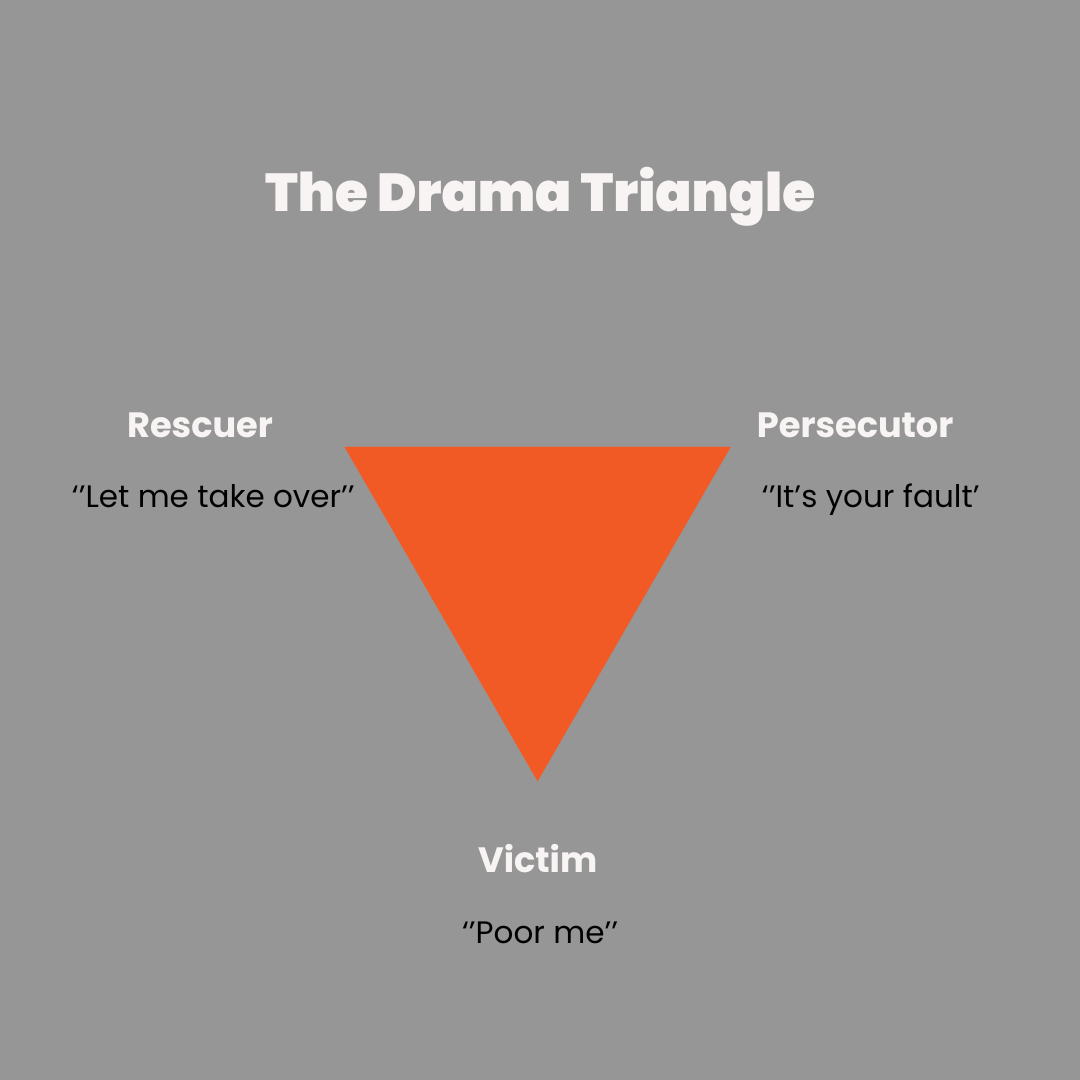Introducing the Drama Triangle: how product teams can build psychological safety
In the fast-paced field of product development, leaders often find themselves in complex interpersonal dynamics. How can product leaders overcome challenges and collaborate with L&D counterparts to foster a culture of psychological safety?
Imagine this: Your team is working diligently on a customer discovery phase for a new product, but subtle tensions and conflicts begin to simmer beneath the surface.
According to Harvard Business Review, the biggest barriers to growth are politics, turf wars and cultural issues.
As a leader, you are responsible for delivering results and play a pivotal role in creating an environment where your team feels safe, supported, and able to innovate.
But this can be more complex than it sounds. The Drama Triangle is a helpful model for navigating complex interpersonal dynamics within a team, and building a culture of psychological safety.
The Drama Triangle
Introduced by psychologist Stephen Karpman, the Drama Triangle identifies three roles that individuals often unconsciously adopt in conflict situations:
the Victim, the Persecutor, and the Rescuer.
These roles perpetuate a cycle of negativity, hindering collaboration, alignment, and overall team performance.
The Victim
In the Drama Triangle, the Victim often adopts a passive role, feeling powerless and oppressed by circumstances. Within a team context, a team member playing the Victim may express helplessness, avoiding responsibility and blaming external factors for challenges. Product working with their L&D counterparts must be attuned to signs of victimhood within their teams, as unchecked victim mentalities can stifle innovation and breed a culture of dependencies.
The Persecutor
The Persecutor assumes a critical stance, often directing blame and judgement towards others. In a team setting, a Persecutor may undermine team members, creating an atmosphere of fear and hostility.
Recognising when a team member is slipping into the Persecutor role is crucial for leaders, as this behaviour can escalate conflicts and break trust. Addressing the root causes of such behaviour and promoting a more constructive approach is essential for maintaining a healthy team dynamic.
The Rescuer
The Rescuer, with good intentions, may try to alleviate the suffering of others but can unintentionally perpetuate the Drama Triangle. In a team context, a Rescuer might constantly intervene to solve problems for team members, preventing them from developing essential problem-solving skills. While helping others is admirable, leaders must be cautious not to foster dependency. Encouraging autonomy and providing guidance rather than rescue is key to breaking free from this role.
According to a study by Google, psychological safety is a key factor in successful teams. Teams that feel safe to take risks, express their thoughts, and admit mistakes without fear of retribution are more likely to excel.
“By embracing diversity and inclusion, big companies can create fertile environments where product teams thrive, ensuring their creations resonate with the diverse world we live in.”
Marina Amigo, Brand Marketing Manager at Google UK.
In your teams, it's crucial to recognise when the Drama Triangle is at play and take deliberate steps to foster a culture of psychological safety.
What does it mean to have psychological safety in the workplace?
In the context of product, psychological safety becomes even more critical. A report by McKinsey & Company highlights that diverse and inclusive teams are 33% more likely to outperform their peers. Creating an environment where team members feel psychologically safe to share their unique perspectives, irrespective of their role or background, can significantly enhance creativity and problem-solving.
Moreover, a study conducted by Harvard Business Review found that teams with high psychological safety are more likely to harness the collective intelligence of their members, resulting in better decision-making and increased innovation.
Ruth Penfold-Brown, Aspire Expert and previously Chief People Officer at Shazam, shares insights on how innovation is not just a buzzword but a make-or-break factor for businesses.
Empowering talent stands as a pivotal element for your ongoing success. As you build on the lessons learned, focus on unpacking the cultural changes needed to build psychological safety at both individual and team levels.
Equip yourself with new frameworks that offer an understanding, granting freedom to your teams. This empowerment positions you to lead your team, enabling a seamless embrace of change and cultivating a culture that champions innovation at pace.
While the first step involves understanding and granting freedom to your teams, the journey towards effective leadership takes another crucial turn.
Empower yourself and your team with a proven Stakeholder Management Framework by Aspire expert Liz Whitney. This framework serves as a guiding light, offering a clear roadmap for identifying and engaging with stakeholders. As a product leader, recognising and managing your stakeholders is crucial for the seamless execution of successful projects.
Download this tool by submitting the form:
Real-world Application
To understand the real-world impact, consider the case of Salesforce, a company renowned for its commitment to employee well-being.
Salesforce has consistently ranked high on lists of the best places to work, attributing its success not only to innovative products but also to a culture that values psychological safety. Salesforce’s journey to creating a psychologically safe workplace provides valuable insights for product leaders and their L&D counterparts seeking to replicate this success.
Salesforce’s approach:
Leadership commitment: Salesforce’s leadership champions the cause of psychological safety. Executives and managers prioritise open communication, encourage diverse perspectives, and actively listen to their teams.
Inclusive decision-making: The company fosters an inclusive decision-making process where employees feel empowered to contribute ideas without fear of judgement. This approach not only fuels innovation but also ensures that every team member feels valued.
Learning and development initiatives: Salesforce invests in robust learning and development programmes, equipping employees with the skills and knowledge they need to thrive.
Feedback loops: The company has in place effective feedback loops, encouraging regular communication and constructive feedback. This way, concerns are addressed promptly, encouraging a sense of trust and transparency.
As a leader, taking cues from such success stories is instrumental in building a workplace where team members feel heard, valued, and empowered to contribute their best.
Conclusion
In this competitive field, the Drama Triangle poses a significant threat to team dynamics and, consequently, success. By prioritising psychological safety, product and L&D leaders can break free from the boundaries of the Drama Triangle and create environments where collaboration thrives. As you lead your team, ask yourself: Are you fostering psychological safety, or are you unintentionally perpetuating a drama-filled cycle? The answer may just be the key to unlocking your team's full potential.
So, how will you shape the narrative within your team?


